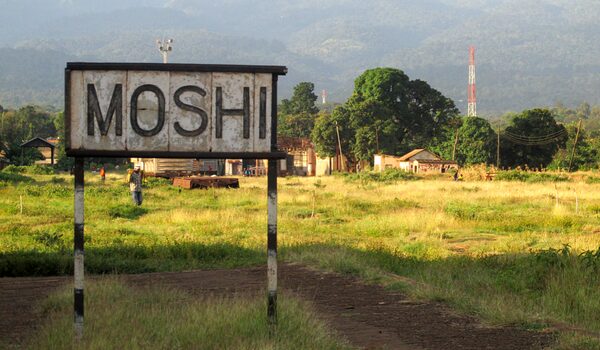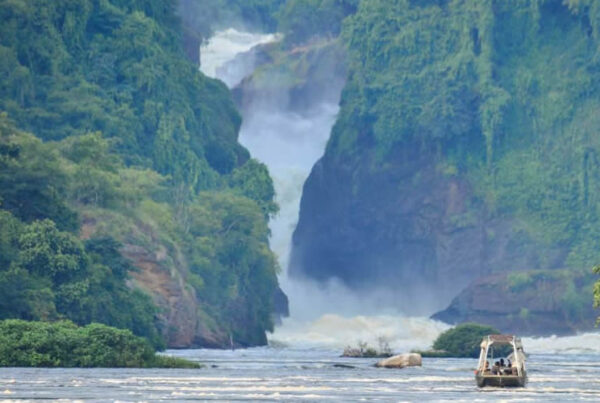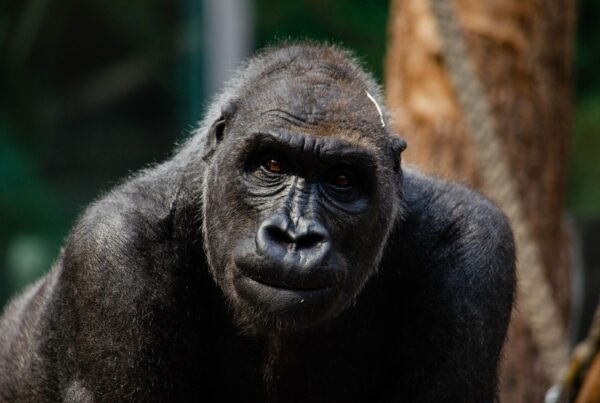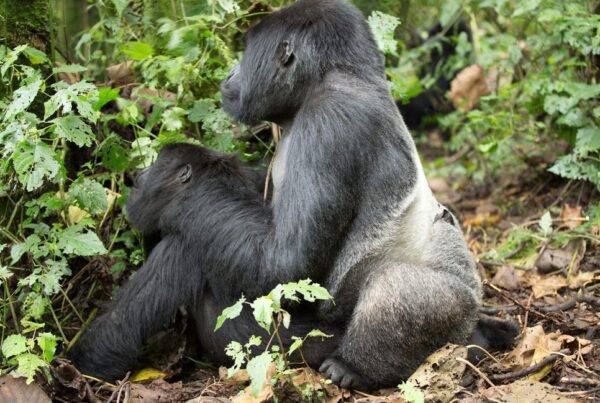10 Best Things to Do in and Around Moshi, Tanzania
Where the Shadows of Kilimanjaro Conceal Endless Wonders
Welcome to Moshi: Tanzania’s Hidden Gem beneath the Great Mountain
In the northeastern corner of Tanzania, where the fertile plains stretch toward the jagged silhouette of Africa’s tallest mountain, a town both vibrant and understated quietly waits to be explored. Moshi, nestled at the foot of the iconic Mount Kilimanjaro, is far more than just a base camp for climbers. It is a cultural, historical, and natural treasure trove, where every path reveals a new adventure and every experience unfolds with authentic African charm.
Unlike the bustle of Arusha or the chaos of larger cities, Moshi thrives on a more intimate scale. The pace here is measured, the people warmly hospitable, and the surrounding landscapes breathtaking in their variety. From the thrill of volcanic trails to the serenity of hidden waterfalls, from immersive cultural encounters to encounters with untamed wildlife, Moshi offers a spectrum of experiences that surprise and delight even the most seasoned travelers.
As the gateway to Kilimanjaro, it is often hurriedly passed through by those seeking the summit. Yet, those who pause and linger are rewarded with a region rich in character, nature, and tradition. The following are the ten best things to do in and around Moshi—not merely activities, but transformative experiences that etch themselves into memory.
Climbing the Mythical Mount Kilimanjaro
At the heart of every Moshi itinerary lies the magnetic presence of Mount Kilimanjaro, Africa’s highest peak and the world’s tallest free-standing mountain. Rising to 5,895 meters, it dominates not just the skyline, but the spirit of the town itself. While the mountain can be admired from the town’s cafes, gardens, and rooftops, the true essence of Kilimanjaro can only be felt on its trails.
Climbing Kilimanjaro is more than a physical challenge—it is a spiritual undertaking, a test of endurance and willpower, traversing through five ecological zones, from dense rainforest to alpine desert and, finally, to the ice-capped summit. Routes such as Machame, Lemosho, and Marangu have each drawn adventurers seeking the moment when dawn breaks over Uhuru Peak, bathing the world in golden silence.
Even for those not climbing to the summit, shorter hikes on the lower slopes or nature walks through the rainforest offer an intimate taste of the mountain’s majesty, often accompanied by glimpses of monkeys, exotic birds, and towering ancient trees.
Exploring the Culture of the Chagga People
Beneath the grandeur of Kilimanjaro lies the cultural heart of Moshi: the land of the Chagga people, who have inhabited the slopes of the mountain for centuries. Their traditions, customs, and stories are deeply entwined with the environment, and learning about them provides a deeper understanding of life on and around the mountain.
Visits to Chagga villages unveil the intricacies of daily life, from traditional banana farming and coffee cultivation to age-old culinary practices. In these communities, hand-dug caves once used for protection during tribal conflicts still remain, offering insight into the region’s layered past. Guided tours often include storytelling sessions, local dances, and hands-on involvement in coffee preparation—from bean to cup—a process deeply symbolic to the Chagga people.
This cultural immersion is not merely observational; it is participatory, sincere, and profoundly human.
Unwinding at Materuni Waterfalls
Just a short drive from Moshi, tucked within the green folds of the mountain’s foothills, the Materuni Waterfalls cascade with ethereal grace. These falls, nearly 90 meters tall, are surrounded by dense tropical vegetation, creating a natural amphitheater of sound and mist.
The journey to Materuni requires a short trek through Chagga farmlands and lush forest trails. Along the way, travelers are greeted with panoramic views of the Kilimanjaro massif, village children calling cheerfully from fields, and a variety of endemic flora. The reward is an invigorating swim in the crystal-clear plunge pool below the falls—a moment of serenity that contrasts beautifully with the energetic hike.
Nearby coffee farms add another dimension to the experience, offering tastings and stories that further ground visitors in the richness of the land.
Relaxing in the Kikuletwa Hot Springs
Also known as Chemka Hot Springs, these turquoise pools in the middle of a semi-arid landscape provide a surreal escape from the dust and heat. Fed by underground volcanic springs, the waters remain delightfully warm, clear, and inviting year-round.
Surrounded by fig trees and the chatter of monkeys, the Kikuletwa Hot Springs offer both recreation and relaxation. Rope swings, submerged tree roots, and shaded picnic spots create a playful, rejuvenating atmosphere. Despite their off-the-beaten-path location, they have become a cherished detour for those seeking a therapeutic dip in naturally filtered geothermal waters.
The drive itself, through villages and savannah, offers a window into rural Tanzanian life and sets the tone for an unhurried, authentic adventure.
Discovering Local Flavors at Moshi’s Markets
To understand a town’s soul, one must visit its markets—and Moshi’s central market delivers a vivid portrait of Tanzanian life in full color and aroma. The narrow walkways brim with fresh produce, handcrafted wares, spices, and textiles, while vendors call out in Swahili, smiling broadly at foreign curiosity.
Exploring the market is a sensory feast. The scent of ripe mangoes mingles with roasted maize and grilled meat. The hum of commerce fills the air, and the rhythm of life unfolds in its most unfiltered form. Traditional herbalists, cobblers, and seamstresses work side by side in an open-air mosaic of enterprise and community.
Sampling street food—from roasted plantains to beef skewers—completes this deep dive into local identity, ensuring that the flavors of Moshi linger long after departure.
Witnessing Sunrise or Sunset over Kilimanjaro
Few experiences compare to watching the sun break or retreat behind the peak of Mount Kilimanjaro. Whether viewed from a rooftop bar in Moshi town or from the nearby countryside, the mountain’s shifting hues create an atmosphere of reverence and awe.
In the early morning, as the mist lifts and the glaciers catch the first light, Kilimanjaro glows with a quiet majesty. At dusk, its silhouette becomes a shadow against fiery skies. These moments are often accompanied by a stillness that encourages reflection—a rare kind of peace found only in nature’s grandest settings.
These scenes are not curated or scripted. They simply happen, each day, as if reminding travelers that the greatest beauty requires no fanfare.
Biking through Rural Landscapes
Cycling tours around Moshi offer a unique and environmentally friendly way to explore the surrounding region. Winding through coffee plantations, banana groves, and rustic villages, these excursions allow for spontaneous encounters and unfiltered views of rural life.
The trails, often guided by local cyclists, showcase the gentle rhythms of Tanzanian countryside, where goats graze beneath acacia trees and women carry harvests on their heads with effortless grace. Depending on the route, the journey may pass through wildlife corridors, community farms, or even cultural heritage sites.
This slower pace reveals the subtleties that are often missed by cars or buses—moments of real connection with the land and its people.
Visiting Rau Forest Reserve
On the outskirts of Moshi lies the lesser-known but ecologically significant Rau Forest, a remnant of once-vast indigenous woodlands. Though modest in size, the reserve harbors unique biodiversity, including blue monkeys, bush babies, and an array of bird species.
Walking trails weave beneath towering fig trees and strangler vines, occasionally opening into sun-dappled clearings. For those seeking a quieter, more contemplative nature experience, Rau Forest offers a beautiful contrast to the high drama of Kilimanjaro and the savannah.
Educational initiatives within the forest also highlight conservation efforts, local reforestation programs, and the cultural significance of certain sacred trees to the Chagga people.
Adventuring at Lake Chala
Perched on the border between Tanzania and Kenya, Lake Chala is a volcanic caldera filled with sapphire-blue water and surrounded by ancient crater walls. It feels worlds away from the towns and highways of Kilimanjaro.
Swimming in the lake is permitted, though its deep waters demand caution. Kayaking and lakeside hiking are popular alternatives, offering different perspectives of this unique ecosystem. Wildlife, including baboons and monitor lizards, often make appearances along the shore.
The tranquility of Lake Chala, punctuated by bird calls and gentle breezes, provides a perfect finale or retreat from the more strenuous parts of a Tanzanian journey.
Making the Most of Your Moshi Experience with WildHorn Africa
Though Moshi is often seen as merely a gateway to Mount Kilimanjaro, its surroundings offer a rich canvas of adventure, culture, and natural beauty waiting to be explored. From the misty trails of its waterfalls to the ancient traditions of the Chagga people, from geothermal springs to volcanic lakes, this region reveals itself slowly, generously, and with unmistakable authenticity.
For travelers ready to embrace the full depth of Moshi’s experiences, it is recommended that their Tanzanian journey be entrusted to the seasoned professionals of WildHorn Africa. With a deep knowledge of the region and a passion for creating unforgettable, sustainable safaris, WildHorn Africa ensures that each itinerary is more than a trip—it is a story worth telling for a lifetime.
To begin your adventure in Moshi and beyond, booking your African tours and safaris through WildHorn Africa will not only elevate the experience, but also connect you with the soul of Tanzania in a way few others can.





 WildHorn Africa – Authentic and unforgettable tours across Africa, guided by local experts who know the land, wildlife, and culture best.
WildHorn Africa – Authentic and unforgettable tours across Africa, guided by local experts who know the land, wildlife, and culture best.


